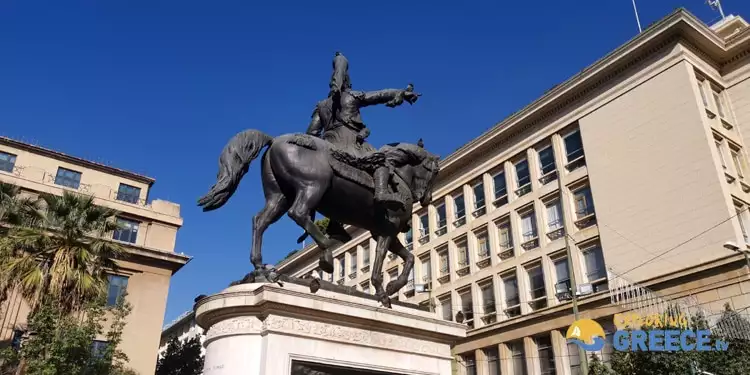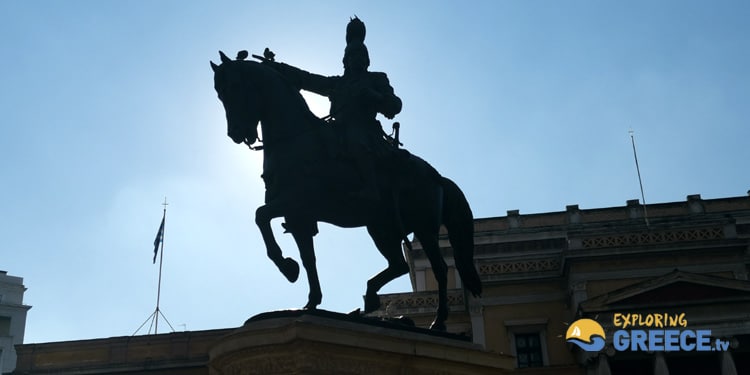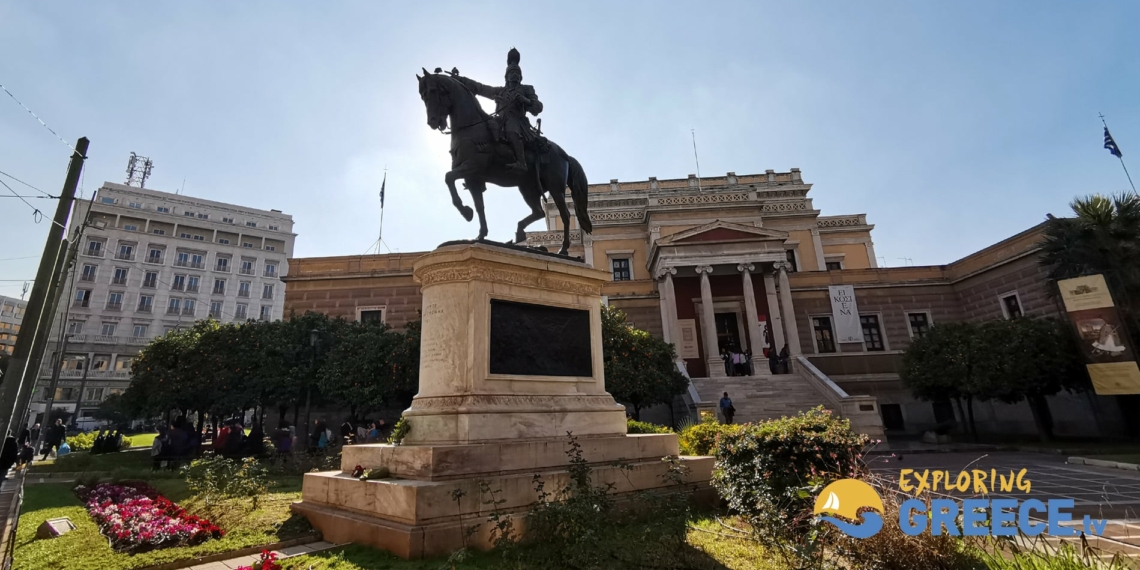If you have passed through Stadiou Avenue in the center of Athens, you have probably noticed the impressive statue of Theodoros Kolokotronis, a hero of the Greek Revolution. The statue is imposing and dominates the homonymous square. It is one of the most important works of Greek sculpture and even the first statue of a mounted man in Modern Greek sculpture.
In 1884, residents of Nafplion (the first capital of Greece after liberation from the Ottoman Empire) raised funds for the creation of a statue. After announcing a competition, they assigned the construction of the statue to Lazaros Sochos, a great sculptor. After doing the necessary research, Sochos decided to depict the hero in his original form. However, due to protestations, he was finally forced to depict Theodoros Kolokotronis wearing a helmet.
Sochos sculpted a masterful and detailed rendering of the hero in the statue. He even studied the faces of living relatives of the hero and used a cast taken from Kolokotronis’ corpse. He created a statue that is iconic and symbolic at the same time. It’s characteristic that the manikin was sculpted between 1891-1895 in Paris and was awarded before it even reached Greece.
Where is Theodoros Kolokotronis looking?

Athens: How did Klafthmonos Square get its name?
The horse's stance

The statue’s horse has one of its two front legs in the air which in the international symbolic language of sculpture means that the mounted man died from injuries sustained during the fight. However, it is known that Kolokotronis did not die due to combat wounds. He died of a stroke at the banquet that was given for the wedding of his young son Constantine. It is assumed that the reason why the horse has such a stance is due to the desire to pay an eternal tribute to the hero.
On the front of the pedestal, an inscription is carved: “Ride on, oh Brave General, on the back of your horse, teaching the nations through the centuries, as to how slaves can become free men.” Theodoros Kolokotronis is still gazing at the Athenians to this day.
Rizoupolis: The business story behind its name







